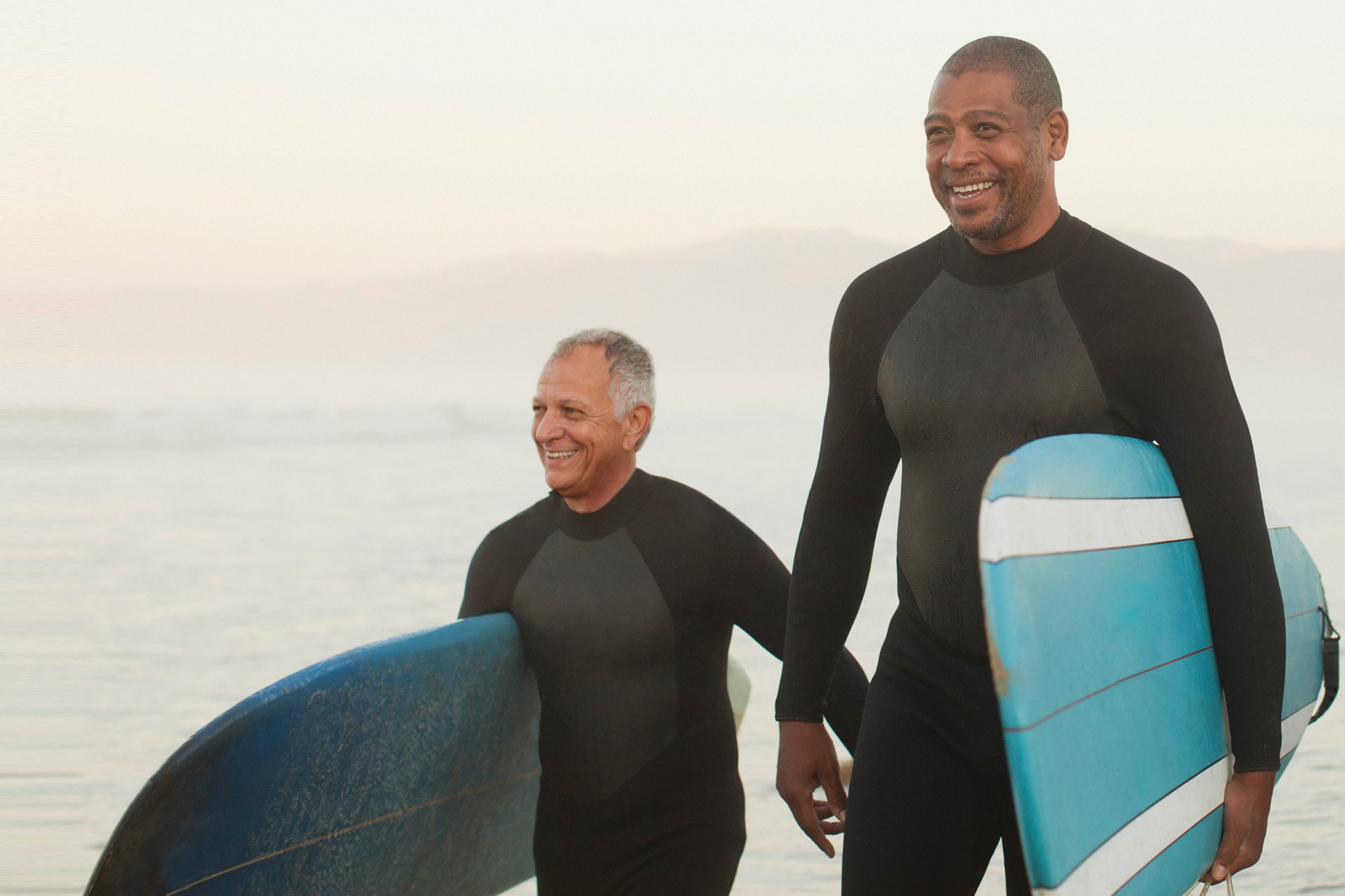September is National Healthy Aging Month. It’s a great reminder of how even as our minds and bodies change, making healthy lifestyle choices can still have a major impact on our overall well being. We’re taking a look at some small changes older adults can make to keep living a vibrant, active life.
SKIN CARE
Our skin naturally changes as we age. The moisture barrier’s function decreases, leaving skin drier. Bruising can become common due to the skin becoming thinner. Wrinkles and age spots appear. Much of the sun damage received when younger, starts to become apparent when people reach their 50s. This can manifest as brown spots, precancerous lesions and skin cancer. tips for mature skin
- Protect yourself from the sun. While damage most typically occurs when younger, protecting your skin later in life can help prevent it from aging faster. Stay in the shade when possible, wear sun protective clothing and use a broad spectrum sunscreen that is SPF 30 or higher daily.
- Change your skin care routine if you’re seeing new issues. Dryness and itchiness may be caused by harsh soaps, fragrances or other irritants.
- Consult your dermatologist about hormonal acne. As women age, they can break out along their chin and jawline. This acne cannot be treated with the topical treatments associated with teenage acne. Instead, it requires hormone-targeted therapy.
- Consider a prescription topical retinoid. If you are concerned about age spots or fine lines, it can have many benefits, including stimulating collagen and elastin production, which helps keep the skin looking supple and youthful.
- Wear compression socks or stockings. As we age, the veins in our legs become less competent. Along with swelling and spider veins, this can cause rashes.
DIET
A healthy diet can support healthy aging. Eating a variety of foods from each food group can help reduce the risk of chronic diseases like high blood pressure, diabetes, hypertension and heart disease.
tips for healthy eating
- Take helpful shortcuts. To get more fruits and veggies in your meals and snacks, you can opt for frozen, canned or ready-to-eat varieties if slicing and chopping fresh ones is a challenge. Make sure you are avoiding foods that are high in added sugar, saturated fats and sodium.
- Maintain muscle mass. Make sure you get enough protein throughout the day. Adding seafood, dairy or fortified soy alternatives along with beans, peas and lentils to your meals can help you maintain muscle mass.
- Focus on nutrients. Choose foods that include the nutrients you need, such as potassium, calcium, vitamins D and B12 and dietary fiber. B12 can be especially important because our ability to absorb it decreases with age, and the use of certain medications can decrease it further. If you are considering taking dietary supplements, it’s important to discuss them with your health care provider.
- Drink plenty of liquids. As we age, we can lose some of our sense of thirst. It’s important that we continue to regularly drink water throughout the day. To avoid dehydration, low or fat-free milk, fortified soy beverages and 100% juice also are options. Beverages with lots of added sugars or salt should be avoided.
- Think about your teeth. Our teeth and gums change with age, and we may not be able to chew everything we could when we were younger. People with dental problems sometimes find foods like fruits, vegetables or meats difficult to manage, but it’s important not to miss out on the nutrients they provide. Look for softer alternatives like steamed veggies, canned unsweetened fruit, low-sodium soups or canned tuna.
- Eat socially. Meals are more enjoyable when shared with others. Invite a friend to join you for a meal at least twice a week, or check with community centers or places of worship for opportunities to eat with others. If you’re in a senior living community, enjoy lunch and dinner with your neighbors in communal dining spaces.
EXERCISE
Exercise can provide big benefits no matter your age, but for older adults, building new, healthier habits can be tricky. From physical limitations to busy schedules, there can be a lot of roadblocks to adding more activity to your daily routine. The key to success is to find what works for you and stay motivated.
- Make exercise a social activity. Social support is a great way to help make lifestyle changes stick. If you have an exercise buddy, you can help keep each other accountable and motivated. You can sign up for a gym or exercise class with a friend or family member. If a more structured workout experience isn’t for you, consider starting a walking group with friends or playing with your kids or grandchildren.
- Track your progress. Stay focused by finding a physical activity plan that works for you and measuring your successes. Try to incorporate the four major types of exercise: strength, endurance, balance and flexibility. As you build stamina, find new ways to increase your physical activity. Look for how you’ve made progress, and use those successes to update your plan.
- Reward yourself for staying active. It will help keep you motivated by allowing you to work towards something tangible. When making your plan, pick a goal and something you will do for yourself once it’s achieved. For example, you might want to complete a 20-mile bike ride. Once you’ve done it, treat yourself to something such as a massage or a visit to a spa.
- Fit physical activity into your daily routine. It will help you build exercise into a habit. Focus on tasks you already have to do that have a physical component, such as walking the dog or even cleaning the house. If your schedule won’t allow you to dedicate a large block of time to exercise a day, find smaller periods that will work.
- Don’t let fatigue stop you. Regular moderate exercise will actually help you feel less fatigued in the long run. Physical activity sends oxygen and nutrients to your tissues, helping your cardiovascular system work more efficiently. Along with having big benefits for your heart and lung health, this will give you a boost of energy.
- Make it fun! Picking an activity that is more enjoyable to you personally means you’re more likely to stick with it. Don’t be afraid to try new things and get creative. Sign up for a dance class or find a
friend to play pickleball with. Stick with what you find fun, and move on from what doesn’t work for you.
Sources: American Academy of Dermatology Association, Mayo Clinic, National Council on Aging, U.S. Department of Agriculture








